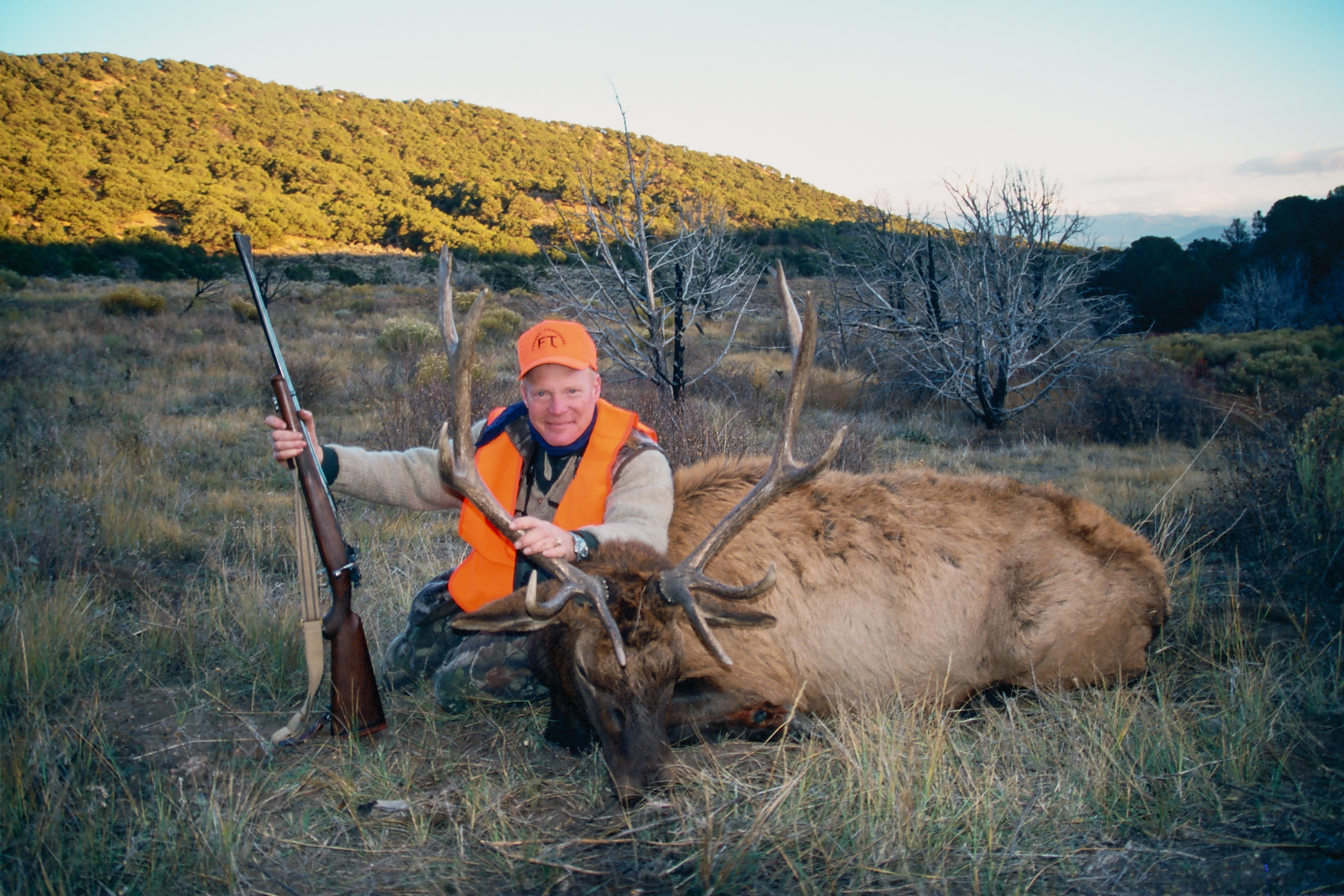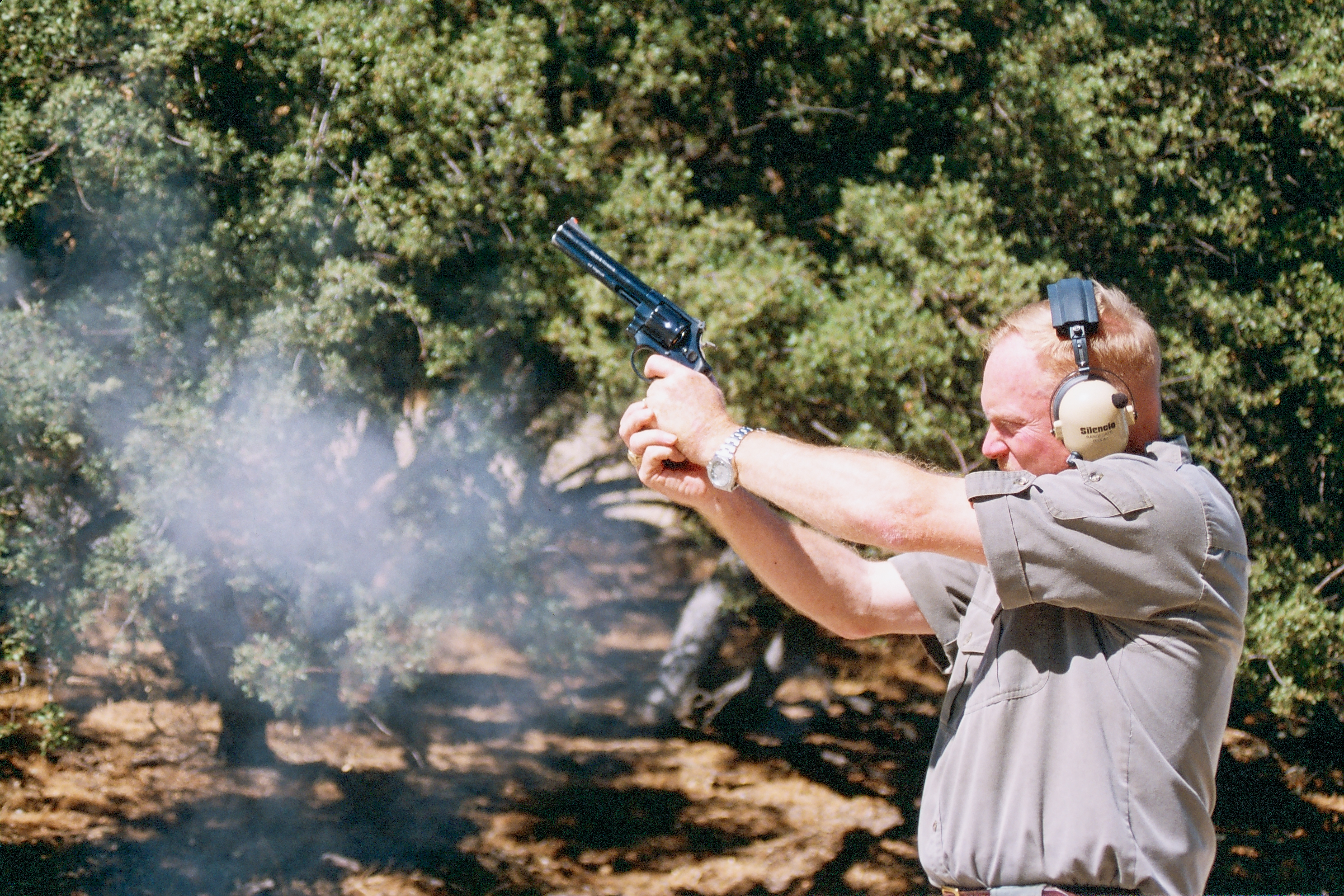By Craig Boddington
Magnifying riflescopes aren’t new. Limited use in the American Civil War, and a few bison hunters used scopes in the 1870s. Scopes improved and became more popular in the 20th Century, but only came into widespread use after WWII.
As a youngster, I learned to shoot with open-sighted .22s, rifles and handguns, but I did my first hunting in the ‘60s with fixed 4X scopes. I never hunted with iron sights until 1979. By then, I had my first variable, a 3-9X Redfield. Wow, that huge image made shot placement so easy. Today variable magnification runs deep into double digits, along with scopes that incorporate laser rangefinders and yield shooting solutions. Just yesterday I went to the range and zeroed a Pulsar thermal imaging riflescope.
With such advancements, are iron sights still useful? Despite magnifying scopes, lasers, and reflex sights, open sights still dominate in handgunning, because ranges are short, and because a handgun with an optic is more difficult to carry and holster. In the rifle world, generations have grown up shooting and hunting with scopes.
This is sad. Much to be gained by learning to shoot with iron sights. One quickly learns slight aiming errors cause huge differences. Daughters Brittany and Caroline had no interest in shooting or hunting until they were mid-teenage. Then, as if a switch was turned, both suddenly wanted to go hunting with Dad. I made mistakes with both. We began with scoped .22s, but I skipped starting them with iron sights. They shoot well, but they missed the valuable lessons of carefully aligning front and rear sights.
Eastern deer hunters who started with Grand-dad’s .30-30 received this training. So did all veterans…until adoption of the ACOG riflescope. Today, many younger hunters have little or no experience with iron sights. Regrettable they don’t have that background, no way to appreciate how spoiled we are by magnifying riflescopes, or the fun and frustration of iron sights.
There are two types of iron sights: Open and aperture. The open sight is typically a blade or bead front sight, which must be visually centered in the notch of a rear sight, usually a V or U. The aperture or “peep” sight uses a similar front sight, with an open circle rear sight, in which the front sight must be centered, then superimposed on the target.
Open sights require the eye to focus in three focal planes: Rear sight, front sight, target. The aperture sight reduces this to two: The eye naturally centers the front sight in the circle. The rear sight “fuzzes out,” but the eye must focus on front sight and target. The riflescope reduces this to just one focal plane: All the eye must do is focus on the target and superimpose the reticle. Same with the reflex or “red dot” sight, which has only existed since the Aimpoint came out in 1975.
Capability with iron sights depends largely on size of target and visual acuity (which tends to diminish with age). When I was young, I could resolve open sights beyond 200 yards. Today, less than half. Before scopes, the aperture sight was the “precision” sight. In the Marines, we qualified annually to 500 yards with peep sights, and much 1000-yard competition is still done with apertures.

With all open sights, as distance increases, the front sight subtends (obscures) more of the target. Absent magnification, same with red dots. A greater limitation to open sights: They require good light. With age, night vision tends to diminish along with overall acuity.
So, sights with lenses that admit more light are always superior in those critical periods at dawn and dusk, aided further by lighted reticles or the illuminated red dot. The only real disadvantage to both scopes and red dots: They are an additional appendage, adding weight and bulk. We have this idea that iron sights are more rugged and goof-proof than optical sights. This can be true, but usually isn’t. Today, factory-supplied iron sights are often flimsy, seemingly supplied primarily for “looks,” little thought they might actually be used. I’ve seen many more iron sights bend, break, and come out of zero than I’ve had trouble with scopes.
Still, scopes and red dot sights remain non-traditional with various types of hunting rifles. To the point that we, including me, stubbornly insist on using iron sights. Good examples are double rifles and traditional lever-actions. I like both types so, in recent years, I’ve been doing more hunting with iron sights than I did when I was young.

There’s a caution here: Iron sights are difficult. At middle-age, kids gone, mortgage paid, we may wake up one morning with the means to acquire a classic double or fine old Winchester. The expertise to effectively use iron sights doesn’t come with the purchase. Steep learning curve, especially if you didn’t grow up shooting irons.
We have this romantic idea that big-bore double rifles should wear “express” open sights. And older top-eject lever-actions defy conventional scope mounting. Fine. Make a commitment to lots of practice, understand you must keep your ranges short, and accept that you’re going to give up potential shots. Especially at dawn and dusk.
To some extent, it depends on what’s more important to you: The hunt or the game. Or, if you’re a “gun guy,” the opportunity to use a certain rifle. Couple seasons back, at our Kansas farm, Tim Baugh wanted to use his late father’s open-sighted 6.5×54 Mannlicher,. Light comes late in our thick woods and leaves early. I put him in a stand set up for archery. He saw deer early and late, couldn’t see his sights, stayed patient, shot a fine buck on his fourth morning.
Unless very close, I much prefer apertures to open sights. I’ve used receiver-mounted peep sights on lever-actions for decades, and I have a double rifle in .303 British with flip-up peep on the tang. With adequate light, I’m still good to beyond 100 yards.

The good news: If you have 100 yards of effective range, you’re in good shape for much hunting. Just understand you can’t always get that close. I’m not going sheep hunting with iron sights. Although, before 1940, everyone did. I’m reluctant to use iron sights for whitetails. Not a matter of distance, but light.
I often use iron sights for feral hogs and black bears. With hogs, I can usually get close enough. If I can’t, another opportunity is likely. On black bears, light is the issue. Couple years ago, I took a peep-sighted .348 Winchester into an Idaho bear blind. Also, a scoped rifle. Had a bear on the bait, too dark to see the front sight. I switched rifles and shot the bear. If you’re really a gun guy, that was serious cheating.
Big-bores doubles traditionally wear fixed open sights. Strong and sturdy, short in range. Perfect for PHs, who only fire in emergencies. For you and me, questionable for buffalo because, with herd animals, tough to get close enough. Can be done, and I have…always with the understanding that I must pass on many potential shots. Optical sights look awful on a classic double, but they are practical. In recent years, as iron sights grew harder to resolve, I’ve choked it up and put red dots and scopes doubles.
Recently, we’ve seen a resurgence in aperture sights. Thanks somewhat to the popularity of the big-bore lever-action “guide gun,” commonly mounted with a large-opening rear aperture that we call a “ghost ring.” Not as precise as a target aperture with tiny opening, but faster, adequate for shooting game to at least 100 yards. This type of lever-action is popular with wilderness wanderers in bear country, also carried by some Alaskan guides. Good choice for both.
As with Cape buffalo, not ideal for you and me to carry on a hunt for grizzly or Alaskan brown bear. Such hunts often come down to just one chance. This past year I considered taking a big lever-action on an Alaskan hunt, talked myself out of it and went with a scoped .338. My chance came at 225 yards, foolish shot with any iron sight, regardless of expertise.

There are many close-range hunting situations where iron sights remain suitable. If you can get close enough and have enough light. In the entire spectrum of world-wide big-game hunting, I can only come up with three situations where iron sights are superior. First is during wind-driven precipitation, too hard and fast to keep a lens clear.
Another is hunting with hounds. Houndsmen are justifiably concerned for their dogs’ safety. They worry about the “tunnel vision” effect of magnifying scopes; some houndsmen do not allow use of scopes. The range is short enough, and a sleek, un-scoped rifle (or handgun) is a blessing in the mad scramble to get to the hounds.
A third is hunting elephant. 25 yards is a long shot. Magnification isn’t needed, and the tunnel vision effect is dangerous. Not just the risk of seeing a wall of gray hide. The greater is other, unseen elephants. You need peripheral vision. With hounds and hunting elephant, a red dot sight is a sound alternative, but in these specialized situations, iron sights are superior.

































































































